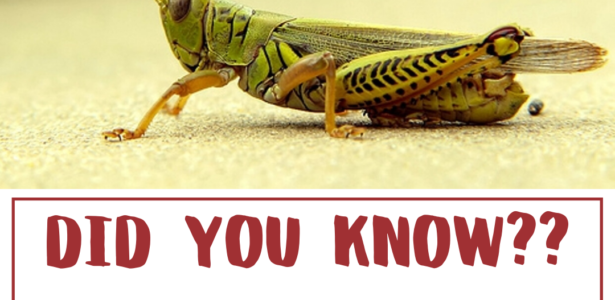Now that summer is officially over and winter is barreling in full-steam, soon some of us may find ourselves daydreaming of those warm summer nights.
Many of us hear the melodic sound of crickets in most of our summer night memories but what would you say if I told you that sound was more than just the tune of a summer night? Interestingly enough a crickets “chirp” can predict the temperature of the surrounding area with surprising accuracy!
Think I’m pulling your leg? Think again!
Crickets are cold blooded or ectothermic, this means as the outside temperature changes, a crickets body temperature will follow suit. This being said, in summer, the temperature rises exponentially, in turn the cricket’s core temperature also rises. This rise in body temperature triggers an increase in the crickets metabolism. This metabolic surge, allows the crickets muscle contractions to happen more rapidly. In essence, as the temperature increases, crickets are functioning at an accelerated rate, metabolically and physically.
If crickets had a “chirp” Olympics – Summer would be the optimal time of year
As the metabolism functions at a fast rate this allows the crickets to complete the physical process in making a “Chirp” much quicker. But how do these tiny insects make such a prolific noise? Many people assume a cricket uses his legs to make this melodic sound —[sorry ladies but uses “his” because only male crickets “chirp”]. To produce a “chirp” a cricket actually uses his wings! How is this so? A cricket has a “scraper” on the top of his wings and a “file” on the underneath of his wings. He scrapes the top of the left wing, over the bottom of the right wing—almost like running your finger over the teeth of a comb—and there the ariose sound is formed!
Interestingly enough this theory was developed in 1897 when a physicist/professor thought there had to be more rhyme and reason to this harmonious sound! A.E. Dolbear was the American physicist who is accredited with the original inquiry into the correlation of crickets & temperature and even developed a formula to allow this theory to be tested:
Rule of Thumb: Temperature (F) = # of chirps in 14s + 40
Actual Equation: Temperature (F) = 50 + ((n-40)14)
Test it Out but keep in mind that crickets are intriguing insects and will not chirp in temperatures below 50 or above 100!
Not surprising it’s not just the cricket that responds to temperature. See below for other interesting facts about animals and temperature.
-Ground hogs & shadow for winter prediction. Think: Ground Hogs Day!
-Typical home-dwelling sharks will respond to barometric pressure changes and flee their homes prior to a storm.
* Citations: Almanac.com and Institute of Agriculture and Natural Resources.


